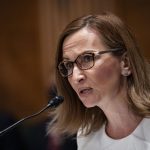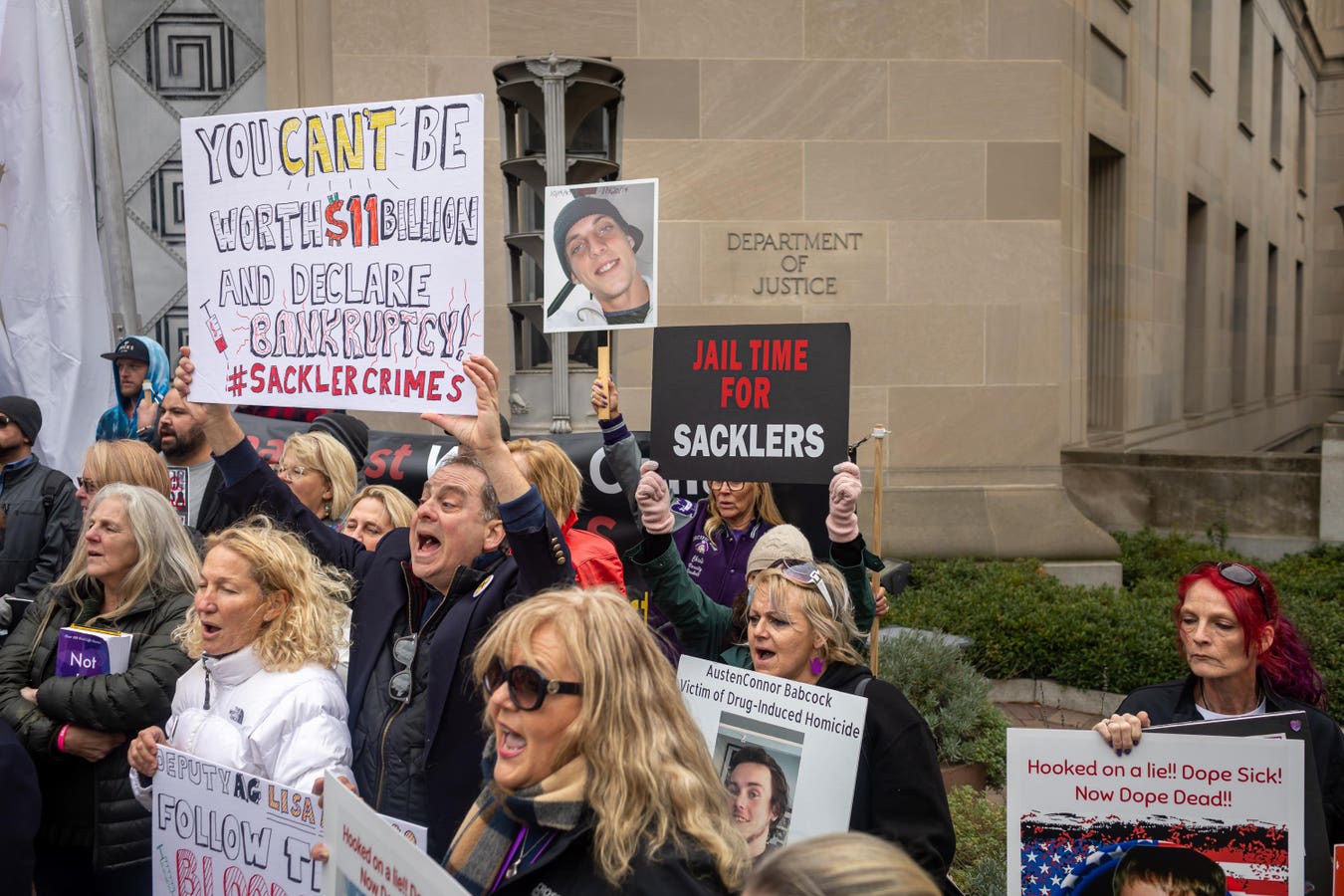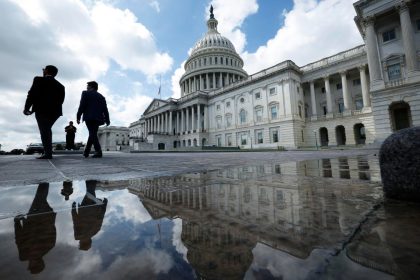There are many folks in the creditor-debtor sector who have long thought that the U.S. Bankruptcy Courts have gotten too big for their breeches. The BK courts, as they are sometime known, frequently use some combination of unclear legislative drafting by Congress and their inherent powers as courts of equity to reach results that diminish the rights of creditors in ways that, frankly, would shock the conscience of neutral observers not having a stake in the controversy. The most notorious example of this abuse of the BK courts powers is the so-called “cramdown” that occurs in certain cases, where the BK courts arbitrarily reduces the amount owned to particular classes of creditors involved in the bankruptcy just for the administrative expediency of making a reorganization plan work.
In a recent high-profile case, Harrington v. Purdue Pharma, L.P., 603 S.Ct. ____ (June 27, 2024), the BK court went far beyond the concept of the cramdown and imposed its will not just upon creditors who were parties to the bankruptcy, but also upon numerous other creditors who were not involved in the bankruptcy proceeding at all ― all for the sake of the administrative expediency of making the bankruptcy plan work for those who were involved. After the case made its way up to the U.S. Supreme Court, a slim majority of five justices finally concluded that the BK court in question had acted in a way that was indeed too big for its breeches.
The majority ruled that the BK court had exceeded its authority in entering an order which cut out these other creditors from ever recovering against the real parties (the Sackler family) who were culpable for the events giving rise to the bankruptcy in the first place. This ruling thus both nixes the plan of the BK court, returning that litigation to deal with the creditors of the bankruptcy in the normal course, and allows the creditors who were not part of the bankruptcy to pursue the Sackler family and their personal assets.
The Sackler family owned an controlled a pharmaceutical company known as Purdue Pharma. Sackler family members controlled Purdue’s board of directors, served as President and CEO, and were heavily involved in Purdue’s marketing strategies. These activities included going along with their sales representatives to visit physicians and they pushed certain sales targets.
Among Purdue’s products was an opioid pain reliever known as OxyContin that was available only by prescription. Since opioids are highly addictive, Purdue marketed OxyContin as a time-release product that, Purdue claim, substantially diminished the risk of addiction. Thus, Purdue marketed OxyContin as not merely suitable for traditional patients with severe maladies such as cancer, but also for a broader range of applications such as arthritis. Through Purdue’s heavy marketing, lead by Sackler family members, and as noted by the U.S. Supreme Court in its recent opinion, “[q]uickly, OxyContin became the most prescribed brand-name narcotic medication in the United States.” [Internal quotation marks omitted]. Purdue earned about $34 billion in revenue between 1996 and 2016, most of which came from sales of OxyContin. For their efforts, the Sackler family entered the top twenty of America’s wealthiest families with an estimated net worth around $14 billion.
Except that OxyContin wasn’t broadly suitable as Purdue claimed. An opioid epidemic rampaged through the U.S. and nearly a quarter-million folks died from overdoses of prescription opioids during the twenty years between 1999 and 2019. It was estimated that the opioid epidemic ultimately cost the U.S. somewhere between $53 billion and $72 billion, per year. OxyContin was at the center of it all.
In 2007, a Purdue affiliate company pleaded guilty to the felony of misbranding, mostly because its claims of being less addictive (recalling the time-release aspect) did not exactly square with reality. Soon thereafter, literally thousands of civil lawsuits against Purdue and the Sackler family began to be filed based on Purdue’s deceptive marketing strategies.
Seeing that the excrement was finally hitting the ventilation, the Sackler family started what was known as the “milking” program of taking distributions out of Purdue to try to move that money out of harm’s way. After the Purdue affiliate’s plea agreement, the Sackler family started taking distributions of as much 70% of Purdue’s annual revenues, although in the previous years these distributions had been less than 15%. According to the opinion of the U.S. Supreme Court that will be discussed shortly, “[b]etween 2008 and 2016, the family’s distributions totaled approximately $11 billion, draining Purdue’s total assets by 75% and leaving it in ‘a significantly weakened financial’ state.” The Sackler family transferred those distributions to a combination of offshore trusts and other asset protection structures.
The net result of the milking program was, of course, that Purdue was bled dry and left unable to fully pay the myriad claims against it ― just as the Sackler family had intended. In 2019, Purdue filed for Chapter 11 reorganization, but of course Purdue did not have anything like the assets necessary to fund a proper reorganization after having been bled dry by the Sackler family’s distributions.
Not wanting some bankruptcy trustee (“BK trustee”) to come after them personally, the Sackler family made an offer to return $4.325 billion spread out over a decade to the Purdue bankruptcy estate (called simply the “estate”), but with some strings attached. The Sacklers first wanted the BK trustee to agree that fraudulent transfer claims against the Sacklers, for taking the $11 billion in distributions from Purdue, were forever extinguished. Second, and this is where we get to the issue of this appeal and opinion, the Sacklers basically wanted immunity against any other litigation brought against them by opioid victims, whether or not those victims were party to the Purdue bankruptcy case.
To accomplish the latter, the Sackler family wanted a release of liability as to all their opioid victims and an injunction that would prohibit any further litigation by either existing or future such victims. The release and injunction was tailored so that it would bar not only claims for mere negligence by the Sackler family, but for any claims based on fraud or misrepresentation as well. The release and injunction were also not to be contingent on whether the opioid victims consented to the settlement or not, but would be binding upon them even if they did not think it was in their best interests to give such consent. Finally, the release and injunction would apply to all Sackler family members and their numerous trusts and business entities.
The Sackler family’s plan was included in Purdue’s reorganization plan which was pitched to the BK court. To further sweeten the pot, Purdue further promised to reorganize itself as a “public benefit” company that warned about opioid addition and took other steps to decrease opioid abuse. Purdue would also use some of the Sackler family’s returned distributions to provide at least $3,500 and as much as $48,000 to individual victims of OxyContin. These victims would not receive their payments all at once, but they would also be spread out over a decade.
Polling creditors about the plan, only 20% of eligible creditors responding to the poll, although most of the small number who did supported the plan. Nonetheless, thousands of opioid victims did not like the plan, openly objected to it. These victims asked that the BK court not destroy their claims against the Sackler family without their consent. The U.S. Trustee’s office, which oversees bankruptcy proceedings, eight U.S. states plus the District of Columbia, Seattle, various Canadian municipalities and certain American Indian tribes, joined in these objections.
Ultimately, the BK court overruled the objections and accepted Purdue’s reorganization plan, including the protections sought by the Sackler family. Appeal of the BK court’s ruling was to the U.S. District Court (bankruptcy courts sit below the district courts in the federal courts scheme of things). However, the U.S. District Court held that the BK court had no authority to extinguish the rights of the opioid victims without their consent thus vacated the BK court’s ruling.
Further appeal was now to the U.S. Second Circuit Court of Appeals. Before the Second Circuit issued its ruling, however, the Sackler family offered to the eight U.S. states and the District of Columbia that the Sackler family would kick in another $1.175 to $1.675 billion (also spread over many years) if those states and DC withdrew their objections to the plan. The states and DC agreed with this deal and withdrew their objections, but the objections of the non-consenting victims, the U.S. Trustee and others persisted.
When the Second Circuit issued its ruling, it came from a divided court but the majority agreed with the BK court’s original ruling and thus overruled the District Court and reinstated the reorganization plan. The last appeal was to the U.S. Supreme Court by Writ of Certiorari, which accepted the appeal because there was a split between the U.S. Circuit Courts as to whether a BK court has the power to do this sort of thing. All this finally brings us to the majority opinion of the SCOTUS.
At this point it is necessary to take a step back and consider what is going on. The Sackler family was essentially proposing that they, who were not a party to Purdue’s bankruptcy case, should be protected by the BK court from the claims of their own creditors. In exchange for this protection, the Sackler family was willing to give up about $6 billion, being a little more than half of the distributions the Sacker family took out of Purdue. This would leave the Sackler family with $5 billion in ill-gotten gains, plus the investment income they had made on that money in the meantime, that was completely and utterly protected from their opioid victims. It would not be a wholly unfair characterization to say that the Sackler family made a $6 billion bribe to the BK court so that the BK court could get enough money back into Purdue so that it could fund a reorganization plan and give some of the opioid victims at least some relief. Or, to state it somewhat differently, it would be roughly analogous to somebody who stole $11 billion from a bank, but then offered to give $6 billion of it back if they could just keep the other $5 billion.
The majority opinion started with the basics. Upon the filing of a bankruptcy petition, an “estate” is created which consists of the assets of the debtor. Under Chapter 11 of the Bankruptcy Code, a debtor can propose a reorganization plan that, if it accepted by the BK court, will pay creditors something (almost always less than they are owed) and provides the debtor with a discharge that protects the debtor from those creditor’s claims. Usually, a discharge operates for the benefit of the debtor only and does not affect the liability of any other entity. And that then states the question before the court as the majority stated it:
The Sacklers have not filed for bankruptcy and have not placed virtually all their assets on the table for distribution to creditors, yet they seek what essentially amounts to a discharge. They hope to win a judicial order releasing pending claims against them brought by opioid victims. They seek an injunction “permanently and forever” foreclosing similar suits in the future. [] And they seek all this without the consent of those affected. The question we face thus boils down to whether a court in bankruptcy may effectively extend to nondebtors the benefits of a Chapter 11 discharge usually reserved for debtors. [Emphasis in original.]
If the Sacklers were not debtors, then how could they somehow get to a debtor’s discharge? The answer of the BK Court and the Second Circuit was through the reorganization plan. Section 1123(b) of the Bankruptcy Code states that a reorganization plan “may” do the following:
“(1) impair or leave unimpaired any class of claims, secured or unsecured, or of interests;
“(2) … provide for the assumption, rejection, or assignment of any executory contract or unexpired lease of the debtor not previously rejected under [§ 365];
“(3) provide for— (A)the settlement or adjustment of any claim or interest belonging to the debtor or to the estate; or (B)the retention and enforcement by the debtor, by the trustee, or by a representative of the estate appointed for such purpose, of any such claim or interest;
“(4) provide for the sale of all or substantially all of the property of the estate, and the distribution of the proceeds of such sale among holders of claims or interests;
“(5) modify the rights of holders of secured claims, other than a claim secured only by a security interest in real property that is the debtor’s principal residence, or of holders of unsecured claims, or leave unaffected the rights of holders of any class of claims; and
“(6) include any other appropriate provision not inconsistent with the applicable provisions of this title.”
The first five paragraphs do not authorize a reorganization plan to protect the interests of non-debtors like the Sackler family so that left the catchall provision of paragraph (6), “include any other appropriate provision not inconsistent with the applicable provisions of this title.” The argument of the parties supporting the reorganization plan was basically that paragraph (6) empowered a BK court to do whatever it thought it needed to do to bring the reorganization plan to fruition, so long as the BK court’s action did not violate paragraphs (1) through (5). The majority, however, pointed out that:
“This understanding of the statute faces an immediate obstacle. Paragraph (6) is a catchall phrase tacked on at the end of a long and detailed list of specific directions. When faced with a catchall phrase like that, courts do not necessarily afford it the broadest possible construction it can bear. [] Instead, we generally appreciate that the catchall must be interpreted in light of its surrounding context and read to ’embrace only objects similar in nature’ to the specific examples preceding it. [] So, for example, when a statute sets out a list discussing ‘cars, trucks, motorcycles, or any other vehicles,’ we appreciate that the catchall phrase may reach similar landbound vehicles (perhaps including buses and camper vans), but it does not reach dissimilar “vehicles” (such as airplanes and submarines). [] This ancient interpretive principle, sometimes called the ejusdem generis canon, seeks to afford a statute the scope a reasonable reader would attribute to it.
Thus, since paragraphs (1) through (5) did not authorize anything remotely like what the BK court did through the reorganization plan, it could not do so under the catchall provision of paragraph (6) either. The majority opinion elaborated on this point:
“Always, the question we face is how far Congress has gone in pursuing one policy or another. [] So, yes, bankruptcy law may serve to address some collective-action problems, but no one (save perhaps the dissent) thinks it provides a bankruptcy court with a roving commission to resolve all such problems that happen its way, blind to the role other mechanisms (legislation, class actions, multi-district litigation, consensual settlements, among others) play in addressing them. And here, the five paragraphs that precede the catchall tell us that bankruptcy courts may have many powers, including the power to address certain collective-action problems when they implicate the debtor’s rights and responsibilities. But those directions also indicate that a bankruptcy court’s powers are not limitless and do not endow it with the power to extinguish without their consent claims held by nondebtors (here, the opioid victims) against other nondebtors (here, the Sacklers).” [Emphasis in original.]
The principle of ejusdem generis was not the only basis of the majority’s position. The majority pointed out that the Bankruptcy Code restricts a discharge to only debtors. By giving the Sackler family immunity from future litigation and collection attempts by opioid victims, the BK court was giving the Sackler family a discharge in all but name even though they were not debtors.
The majority next looked at the Sackler family’s immunity and noted that the benefits that they received through the reorganization plan went beyond what even a discharge could accomplish under the Bankruptcy Code. One comparison was that a debtor could not receive a discharge for claims based on fraud or for willful and malicious injury, but the Sackler family was given immunity for these claims. The reorganization also denied some claimants the right to a trial by jury for their personal injury or wrongful death claims, which a discharge could not accomplish. But even worse, for a debtor to receive a discharge, the debtor first had to put all its assets “on the table” by way of making them part of the bankruptcy estate to be administered — and the Sackler family had done nothing of the sort here.
Another point raised by the majority was that Congress provided in the Bankruptcy Code for the issuance of an injunction that would protect third-parties who were not debtors, but that provision was limited to asbestos-related claims (and carried other statutory restrictions). “That the code does authorize courts to enjoin claims against third parties without their consent, but does so in only one context, makes it all the more unlikely that § 1123(b)(6) is best read to afford courts that same authority in every context.” [Emphasis in original.] In other words, Congress knew how to protect third-parties from claims, but did so only in the single instance of asbestos-related cases, and from that it could be inferred that Congress did not desire that such powers be extended to the BK courts in other areas, such as opioid claims.
The majority opinion next turned to the argument that the Sacklers were not getting a discharge but only a release from liability:
“How do the plan proponents and the dissent reply to all this? Essentially, they ask us to look the other way. Whatever limits the code imposes on debtors and discharges mean nothing, they say, because the Sacklers seek a ‘release,’ not a ‘discharge.’ [] But word games cannot obscure the underlying reality. Once more, the Sacklers seek greater relief than a bankruptcy discharge normally affords, for they hope to extinguish even claims for wrongful death and fraud, and they seek to do so without putting anything close to all their assets on the table. Nor is what the Sacklers seek a traditional release, for they hope to have a court extinguish claims of opioid victims without their consent. [] Describe the relief the Sacklers seek how you will, nothing in the bankruptcy code contemplates (much less authorizes) it.”
Looking at U.S. bankruptcy law prior to the adoption of the current Bankruptcy Code, the majority noted that such law also did not allow anything like a discharge for non-debtors, and generally reserved the granting of a discharge only to those debtors who made a “fair and full surrender of [its] property.” The Sackler family had, of course, done no such thing.
Finally, the majority opinion turned to the public policy argument that unless the reorganization plan was adopted, the opioid victims were unlikely to recover even a fraction of their damages and probably not even as much as $3,500 each. In response, the U.S. Trustee argued that the liability exposure of the Sackler family might induce them to enter into consensual settlements with their opioid victims at a potentially much larger sum than the about $6 billion currently being offered. Further, the U.S. Trustee argue that allowing the Sackler family to win immunity would set a bad precedent, since every future tortfeasor would do their wrong and then seek their own immunity without ever placing their assets on the table. “Endorsing that maneuver, the Trustee says, would provide a ‘roadmap for corporations and wealthy individuals to misuse the bankruptcy system” in future cases “to avoid mass-tort liability.’ “
The majority declined the opportunity to take up this public policy dispute, nothing that such things were for Congress to decide and not the courts. Congress could, if it chose, make similar exceptions for immunity for opioid cases as it had done for the asbestos cases. But Congress had so far not done so, and the majority did not feel that it was appropriate for the courts to step into the shoes of Congress and make decisions for them:
“Either way, if a policy decision like that is to be made, it is for Congress to make. Despite the misimpression left by today’s dissent, our only proper task is to interpret and apply the law as we find it; and nothing in present law authorizes the Sackler discharge.”
With all of that, the Supreme Court reversed the decision of the Second Circuit, which then put the decision of the District Court back into play which had nixed the reorganization plan.
The four-member dissent in the case — a dissent which is longer than the majority opinion — is basically a point-by-point refutation of the majority’s opinion, so I’m not going to rehash all that again. Interested readers can go read the dissent themselves. For what it is worth, my own short read-between-the-lines of the dissenting opinion is that it is ultimately anchored in the aforementioned concept of administrative expediency: There is a lot of opioid abuse litigation going on now and more to come in the future, and the best way to cut this off and free up the courts is to approve the reorganization plan even if a few eggs are broken (the non-consenting and third-party creditors) in the process of making that particular omelet. Which is to say that by the time a jurist makes it to the Supreme Court, they have been in the federal court system for a long time and have become, as might be said in the movie the Shawshank Redemption, “institutionalized”. Thus, Supreme Court justices (and I have personal met and socially chatted with a few of them)fn tend over time to look at the federal court system as a vast administrative enterprise whose primary job is to efficiently process the huge bulk of litigation more than it is to render exact justice in particular cases. This is not to say that they ignore individual justice (they do not), but rather that such justice usually takes the passenger seat to broader concerns about keeping the pipeline of litigation moving. It is sort of a “the best justice is the justice for the most” type of approach. This is borne out in the dissenting opinion in this case where the minority grouses about the potential for the Sackler litigation to explode, combined with the fact that most of the victims would at least get something through the Purdue reorganization plan. Reading between the lines, it is administrative expediency which is really driving the minority opinion, not so much how the equities of all this shake out for all individual victims.
fn. As to how my personally meeting Supreme Court justices came about, I defer you to my buddy and Phoenix attorney Ike Devji who some years ago invited me to attend the Devitt Award ceremony with him at the Court.
ANALYSIS
Your humble author is nothing like a bankruptcy attorney and I will leave the analysis of the majority and dissenting opinions to those more knowledgeable folks. What I am going to focus upon is the consequences of the Supreme Court’s ruling as it relates to the Sackler family.
A presumption to be made going forward is that, with this reorganization plan nixed by the Supreme Court, Purdue will not be able to get approval of any plan and thus its Chapter 11 reorganization will be converted to a Chapter 7 liquidation. This will cause the Sackler family to lose control of the Purdue bankruptcy as an independent trustee will be appointed to administer the Purdue Pharma bankruptcy estate and liquidate its remaining assets. There is very likely to be litigation between the Purdue bankruptcy estate as the new trustee will try to claw back distributions and the Sackler family seek contractual indemnification for their personal attorney’s fees. It will be ugly, very ugly.
Setting Purdue aside, the Sackler family already faces a tsunami of litigation against them personally and very likely there is more on the way. There are probably four likely outcomes to this situation:
(1) The Sackler family itself files for bankruptcy protection;
(2) The Sackler family is forced into an involuntary bankruptcy;
(3) The Sackler family does not file for bankruptcy protection, but instead tries to stand behind their trust and entity planning to protect their wealth; or
(4) The Sackler family settles with everybody.
As to the first, one might think: “If the Sackler family can obtain a discharge by becoming a debtor in bankruptcy, then why doesn’t the Sackler family just file for bankruptcy?” The answer to this question is that to obtain a discharge, the Sackler family would (as the majority opinion states) put their assets on the table and subject to the decisions of the BK court. That the Sackler family doesn’t want to do this is amply demonstrated by the fact that tried to obtain a de facto discharge through Purdue’s reorganization plan, but without putting their asset on the table. Also, as the opinion states, the Sackler family engaged in a great deal of planning, such as putting their assets into offshore trusts and various business entities, all of which a BK court might unwind. If the Sackler family did not cooperate in the unwinding of these entities, then they would not obtain a discharge which would have been the whole point of bankruptcy in the first place.
The next possible outcome is similar to the first, which is that the opioid victims place the Sackler family into an involuntary bankruptcy. If you are thinking that the Sackler family with $11 billion might not be insolvent, consider that an involuntary bankruptcy considers the personal assets of each debtor and does not include the assets held in trusts or business entities. Thus, even if they control wealth into the billions, it is still quite possible that personally they are technically insolvent for bankruptcy purposes. This is probably the worst scenario for the Sackler family, since no court has anywhere near the powers to cut through trusts and entities than a BK court. Plus, if the Sacklers did not cooperate in unwinding their asset protection, they would lose their discharge too.
That brings us to the last outcome, which is that the Sackler family stays out of bankruptcy but then becomes embroiled in the Mother Of All Judgment Enforcement Cases. In this scenario, myriad creditors operating individually or cooperatively attempt to bust through the Sackler family’s trusts and entities using whatever state judgment enforcement laws are available in particular cases. This would be both harrowing and dangerous, since if one creditor was able to bust through anywhere, then every other creditor would follow like a dam breaking. As a creditor-debtor lawyer myself, it is very difficult to envision exactly what this scenario might look like. My guess is that sooner or later a group of creditors would get together and force the aforementioned involuntary bankruptcy instead, which basically amounts to a huge class-action judgment enforcement. And, of course, creditors would get the benefit of the BK court’s superpowers to unwind things.
That finally brings us to the fourth and most likely outcome, which is that the Sackler family settles with everybody. Essentially, the Sackler family could put up a huge pot (they were already ready to put up about $6 billion to fund the Purdue reorganization plan) contingent upon all creditors buying into taking their share of the pot and releasing the Sackler family from liability. This could be done, for example, through something known as an “ABC” which is an acronym for “Assignment For The Benefit Of Creditors”. In this scenario, the Sackler family would pledge some large amount of money to a trustee, to be paid if and only if all the opioid claimants release the Sackler family from all liability. Once everybody has signed off, the Sackler family pays the money to the trustee and the trustee distributes the money to claimants. This gets Sackler family to the result they sought with the Purdue reorganization plan, albeit they will probably have to kick in an even larger amount of money than the $6 billion to get this done.
These are the most likely outcomes, but they are not the only possible outcomes. For instance, it may be that all the opioid claimants are merged into a class and then there is a class settlement. Consult your OUIJA board for more information on possible outcomes.
The last thing to be discussed, albeit briefly, is the theories that the opioid victims may use to unwind the Sackler family’s trust and entity planning. While one might think first of the voidable transaction (was: fraudulent transfer) laws, it may well be that the expiration period for those laws has since run. The more effective strategy may be through the use of so-called “reverse veil piercing” which is a form of alter ego law — essentially claiming that the Sackler family and their trusts and entities are all just one and the same such that the assets held in the trusts and entities should be made available to the opioid victims. We will have to wait and see.
The one thing that I can easily promise is that the saga of the Sackler family will continue to be very interesting from a creditor-debtor perspective, so please stay tuned.
Read the full article here


















